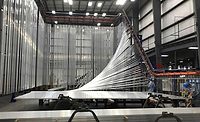Coatings Special Section
Coatings Continue to Climb
Confidence in the Roof Coatings Market Grows, Presenting Opportunities for Roofing Contractors amid Economic Uncertainty

The popularity of roof coatings in the marketplace was already climbing when the post-pandemic shortages in roofing materials gripped the industry for roughly 18 months. During that time, facility owners looking to capitalize on the moment — and roofing contractors eager to keep their projects and businesses on track — turned to readily-available coating solutions.
While that presented a short-term boom for some roofers, some contractors are riding that wave of success back downward as supplies of other traditional roofing systems return to pre-pandemic levels — or are at least getting closer. Despite its slow retreat, inflation remains, and price volatility is also taking a toll, leaving much of the nation’s economic future uncertain.
That said, there’s still a lot of optimism surrounding roofing coatings in the industry today, and for good reason.
The global cool roof coatings market, in particular, was estimated at roughly $4.5 billion in 2022 and is projected to swell past $8 billion by 2032, according to Fact.MR — a market research firm and consultant. The United States holds more than one-quarter of that global market, and increasing pressures to reduce facility energy costs while moving closer toward desired "green" building certifications, will likely fuel demand.
“The drive to build more resilient roofs has created space for coatings which promote repair and maintenance to reduce unnecessary waste going to landfills,” said Chris Huettig, national director of Technical Services at KARNAK.
Other highlights from Fact.MR’s latest research includes:
- Silicon-based coatings should gain significant global market share with increased interest in their ability to resist sunlight.
- Liquid-applied roof coatings gained significant traction over the past half-decade.
- Although mainly seen in commercial roofing applications, the demand for cool roof coatings in residential settings will accelerate at a high pace.
- The top five roof coatings manufacturers held about 38% of the product’s market share in 2021.
- Though it depends on geography and climate, the Cool Roof Rating Council (CRCC) estimates average energy savings from cool roof coatings to be 7-15%.

Industry experts say the drive to build more resilient roofs has created space for coatings, which promote repair and maintenance to reduce waste going to landfills.
In the Know
Many building owners and managers know they can increase the life of their roofs through the proper use of coatings and adequate roof maintenance. With high interest rates pinching the lending market and funding for capital improvement projects stalled, or in some cases dwindling, there are differing opinions on whether the market slows or could sustain a second wave of acute growth.
“The biggest concerns surround the uncertainties in the economy,” said Keith Stevenson, vice president of sales for Huntsman Building Solutions. “The potential for new builds and projects to come out of the ground will be uncertain for a time. Also, the pinch on upkeep budgets is a concern. The economic environment is just not as stable as we would all like it to be.”
Stevenson still called the potential marketplace “limitless” for roofing contractors that want to add coatings to their service offerings. It appears they agree.
In RC’s 2023 survey of roofing contractors, the number of contractors indicating they were involved with coatings products exceeded 60%, surpassing both low-slope and steep-slope asphalt for the first time in the survey’s history.
Nearly half (47%) of respondents indicated that coatings sales increased over the prior year; 42% said sales were flat; just 11% reported a decrease. Coatings sales were expected to remain the same or slightly increase with most contractors.
Another area of change for believers in roof coatings that could drastically impact the future of roofing is in the insurance realm. Roofers building their companies on storm response and restoration can soon see coatings as a viable revenue generator. That’s because carriers hit with major natural disasters in recent years are now looking for cost-saving alternatives and willing to negotiate.
“In the past, insurance companies would either deny a claim or insist that the roof be torn off and replaced. Coatings have now entered the conversation,” explained Kyle Stavish, national business development manager with Mule-Hide Products Co. “Insurance companies are recognizing that coatings chemistry has evolved and that fluid-applied systems are durable, flexible and dependable while also costing much less and causing far less disruption than replacing a roof.”
Looking for a reprint of this article?
From high-res PDFs to custom plaques, order your copy today!







